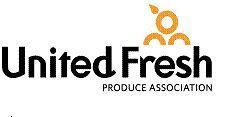
The Fresh Fruit and Vegetable Program (FFVP) increases the consumption of fresh fruits and vegetables by children at participating schools by one quarter of a cup per day, or 15 per cent, according to a new independent evaluation of the programme issued by the US Department of Agriculture's (USDA) Food and Nutrition Service.
In addition, the evaluation found that the additional fruits and vegetables consumed replaced the consumption of other less healthy foods, thereby not increasing total energy intake.
'We are thrilled that this comprehensive evaluation confirms what we have seen in our visits with students, parents and school officials in FFVP schools over the last 10 years,' said Dr Lorelei DiSogra, vice-president of nutrition and health for the United Fresh Produce Association. 'The FFVP is effective in its mission to increase children’s total fruit and vegetable consumption and expose them to a wide variety of fresh fruits and vegetables, while at the same time replacing other less healthy snacks.
'This is an important independent evaluation that confirms the FFVP is transformative and helps students develop healthier eating habits.”
Increasing fruit and vegetable consumption among low-income students, even by small amounts, is likely to confer a public health benefit, as children from socioeconomically disadvantaged families tend to have the lowest intakes of fruit and vegetables, the group noted.
“These results demonstrate that the FFVP increased students’ fruit and vegetable intake approximately twice as much as other interventions,” added DiSogra.
The FFVP is intended to increase fruit and vegetable consumption among students in the nation’s poorest elementary schools by providing free fresh fruits and vegetables to students outside of regular school meals.



